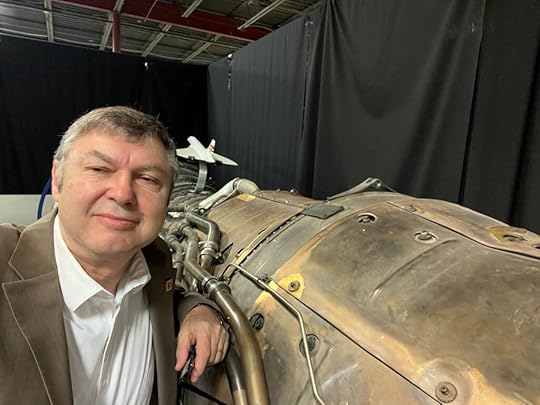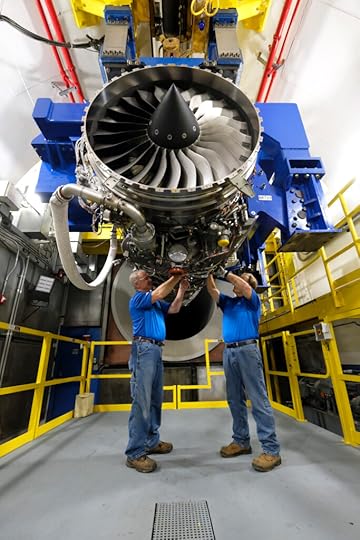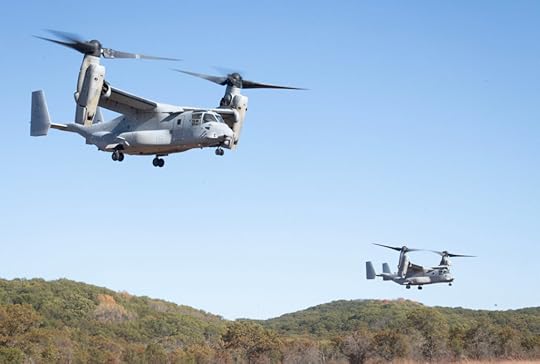Meeting modern airpower needs with faster R&D cycles for propulsion
As new technologies appear seemingly daily, companies must be prepared to quickly adapt, evaluate new solutions and implement them at a pace that keeps up with both demand signals and competitors. Doing so requires a robust research and development (R&D) infrastructure that allows for rapid development, deployment and advancement of technologies across all of the domains involved in modern military applications.
Rolls-Royce LibertyWorks brings the next generation of energy, propulsion, and power management systems to life. Located in Indianapolis, their advanced research and rapid-prototyping facility turns high-potential ideas into demonstrable systems — shaping how the world powers flight, defense, and exploration.
Breaking Defense spoke with John Kusnierek, Senior Vice President, LibertyWorks Research and Technology, on how Rolls-Royce is adapting to change, its role in the defense industrial base and its heritage as LibertyWorks marks its 30th anniversary.
Breaking Defense: What’s happening in the world that necessitates the need for something like LibertyWorks, and how do those threat scenarios inform the work that you do?
Kusnierek: We are actually at one of the most consequential periods of time in both the aerospace industry and the defense industry. You can see that emerging in lots of different ways. It’s quite vivid. In the Ukraine-Russia war, where you have the appearance of drones in quantities that had previously not been imagined, doing everything from very short-range strikes to long-range strategic strikes and emerging very quickly on the battlefield. One of the things that’s certainly coming through as the key ingredient is the ability to adapt as quickly as possible.
 LibertyWorks Research and Technology, Senior Vice President, John Kusnierek with a Rolls-Royce Olympus engine used on the Concorde supersonic jet. (Photo courtesy of Rolls-Royce)
LibertyWorks Research and Technology, Senior Vice President, John Kusnierek with a Rolls-Royce Olympus engine used on the Concorde supersonic jet. (Photo courtesy of Rolls-Royce)Our customers, the Department of Defense and others, all recognize that speed to field equipment is important. At the same time, there is still the need for the traditional larger programs that move at a somewhat slower pace, but nonetheless are very foundational, whether that is bombers, fighters, or transports.
As the power of computing, the size of mission systems like electronics and radars, as those have steadily been miniaturized, then obviously in many cases the aircraft, the platforms, become smaller and hence the engines become smaller. But that is actually not a race to the bottom. All that means is that some of the traditional missions that were accomplished by larger aircraft can now be accomplished by smaller aircraft.
What are the key areas of research and development in propulsion?
One of the examples of rapid prototyping that we are extremely proud of supported an urgent operational need for infrared suppression on the AC-130W gunship, and LibertyWorks has technologies that are fairly unique in the industry that we applied to that problem. We had to compete successfully, and our competitors are very sharp.
One of the things about the U.S. defense market is that it’s very competitive. If you’re in a group of the best and competing to win, the Defense Department has the access to the best solution. We were able to provide a design and field something in a very short period of time, a matter of months, which was able to fly in combat to support combat operations successfully.
One of the concerns often with rapid prototyping is, yes, we’re going to provide something which can be fielded very quickly, but can it be operated over a long period of time? Can it be sustained so that it’s actually mission capable? In this case we were successful with a system that was robust, did not require maintenance and was effective. That’s a great example of a shorter time cycle.
Hypersonics is actually a good example of a longer cycle. Rolls-Royce has a variety of architectures and solutions which are versatile across a range of speeds that a hypersonic system would be flying. These are air-breathing hypersonic technologies, not to be confused with rocket-boosted weapons. The cycle here depends on the maturity of the technology. It depends significantly on how quickly the Defense Department wants to move. The last thing not to lose track of is that hypersonics is test infrastructure intensive. Having the ability in the United States to test these systems is a key component.

The Rolls-Royce F130 turbofan engine has been selected as the powerplant for the B-52 Commercial Engine Replacement Program. (Photo courtesy of Rolls-Royce)
Why is this a pivotal time in aerospace and defense for propulsion? How is the pace of technology affecting real-world events?
If you look at some of the headlines, there are certainly comments out there from defense officials from both the U.S. and our European allies with regard to the security environment being the most challenging since the end of World War II. There’s a geopolitical pressure, geopolitical risk, if you will, that exists in a lot of different areas in the world.
You have to combine that with the pace and availability of technology, and the proliferation of technology, whether it is miniaturization of electronics which use AI for example, or a future in which quantum computing or quantum communication becomes important. Quantum sensing is also something that’s on the horizon. These are technologies that are coming into play now in some manner, but I don’t think we have even scratched the surface of all the use cases and how prolific and impactful those technologies will be.
Think of the first cell phone, which was not a smartphone, and then the way that the smartphone has absolutely revolutionized the way we live. It’s going to be that kind of impact from these other technologies.
Discuss the importance of Rolls-Royce and LibertyWorks to the U.S. defense industrial base, and the partnerships you’ve developed over the years across the U.S. supply chain to help support that?
We have a broad footprint. We provide engines — I’m talking Rolls-Royce, Indianapolis — to all of the services for their platforms, for their aircraft, for their capability. We also provide sustainment support for those 24/7, 365. We’re proud of our engines, not only from a heritage standpoint, but also from a looking-forward standpoint.
I can tell you when there’s news of an at-sea rescue using, for example, V-22s, that gives us a tremendous amount of pride, as does seeing the elephant walks on some of the bases where our aircraft are present. A lot of veterans work at Rolls-Royce. I will note that in the most uncertain times of COVID, our workforce kept delivering engines.
 The V-22 Osprey is powered by two Rolls-Royce AE 1107C engines. U.S. Army photo by Kevin W. Clark.
The V-22 Osprey is powered by two Rolls-Royce AE 1107C engines. U.S. Army photo by Kevin W. Clark.When you look back at the last 30 years of LibertyWorks and its roots in the Allison Engine Company, what stands out to you?
I’m a history geek. I love finding out about and examining the long and storied history of Allison and Rolls-Royce. As I look back at the 30 years, what I would absolutely foot stomp is change. So change occurs, technologies come into focus. Some of the technologies mature and become obsolete, but it’s always about change. It’s always about looking forward and figuring out where we need to go next – staying close with the customer, finding out what is important to them, which also changes as time unfolds.
Rolls-Royce and LibertyWorks are a key part of the U.S. defense industrial base. We are very proud of our position supporting our DoD warfighting customers. We’re dedicated to that and we are looking for what is actually the next stage of need from the customer.
Douglas A. Macgregor's Blog
- Douglas A. Macgregor's profile
- 28 followers



